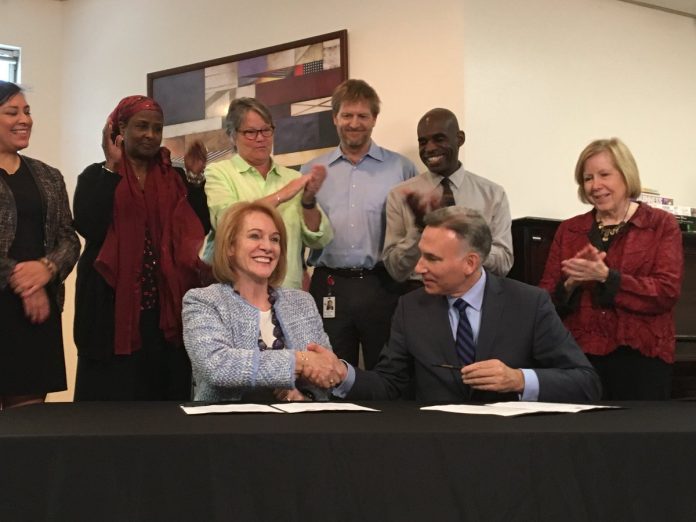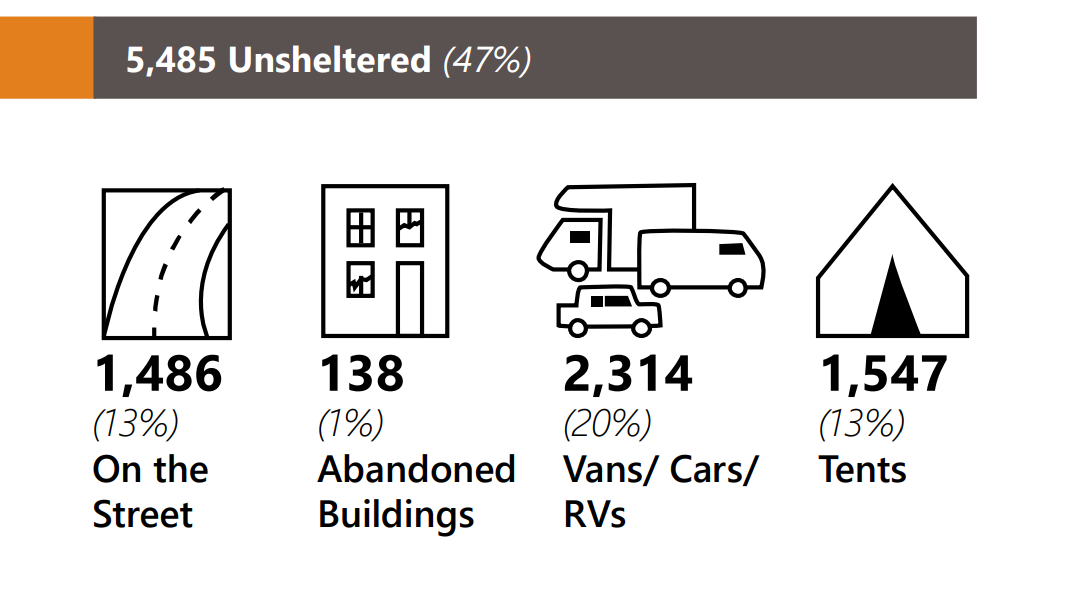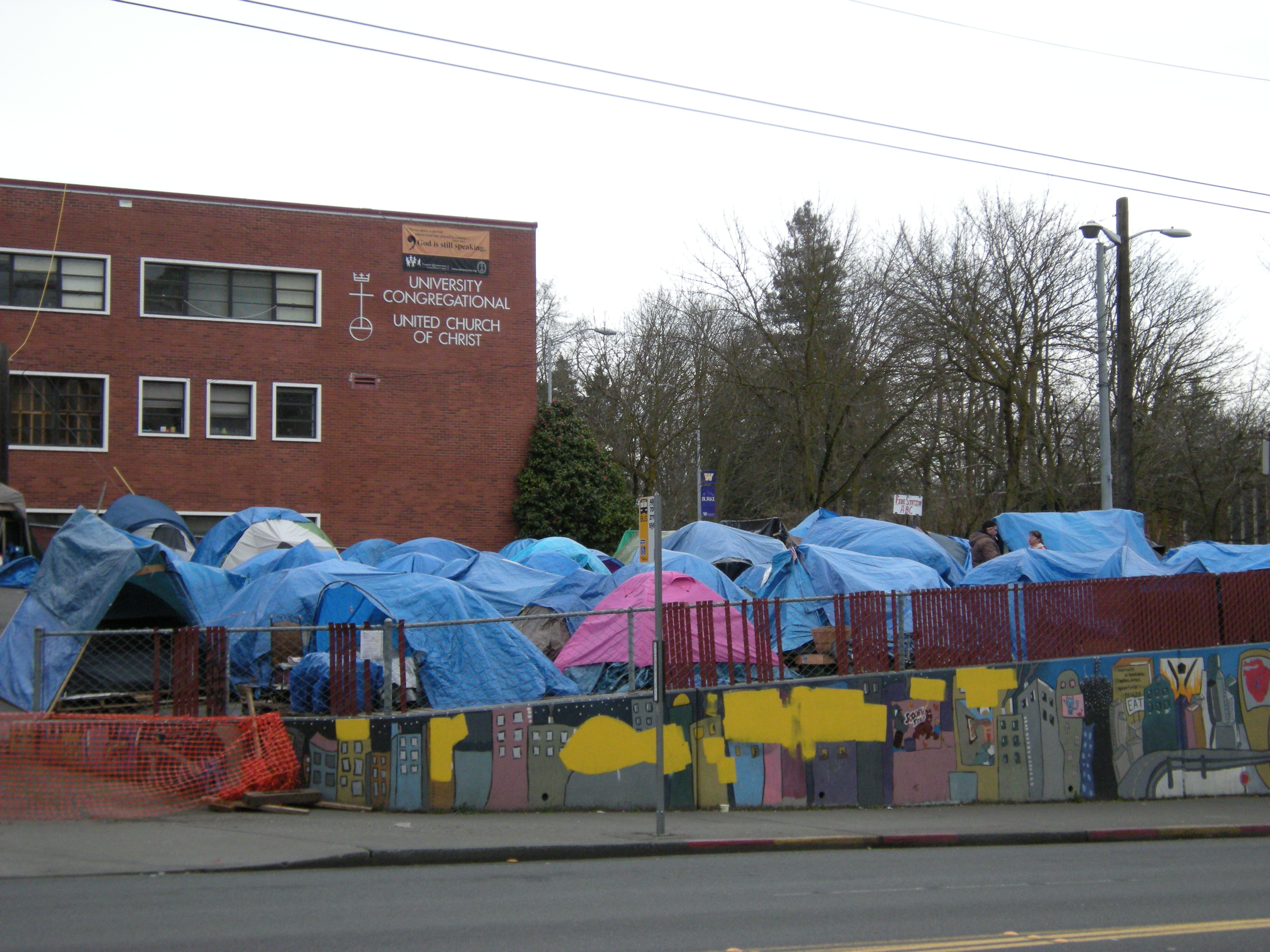
On Thursday Mayor Jenny Durkan announced a new regional partnership to combat homelessness alongside King County Executive Dow Constantine. Mayor Durkan said consolidating provision of homelessness services and mental health care will increase efficiency.
“The top challenge our City faces is the crisis of affordability and homelessness. It is also a regional crisis that demands regional solutions because no problem stops at the city limits,” Mayor Durkan said. “But a key component has been missing from our strategy: a truly coordinated, regional response across Seattle and King County.”
Less certain was if additional resources would be forthcoming. At the announcement, Mayor Durkan would not say if she supported the employee hours tax (better known as the “head tax”) to fund affordable housing and homelessness services to the tune of $75 million per year. Previously, Mayor Durkan laid out a long list of conditions a head tax would have to meet to earn her support–and perhaps avoid her veto.
Pattern of Ambitious Campaigns, Lackluster Results
The move continues a pattern for Seattle mayors: launch an ambitious campaign against homelessness and call for regional support and service integration, sometimes with delusions that substantive federal help will be on the way. While not rushing forward to drastically increase local funding, Seattle mayors generally continue aggressive clearing homeless encampments in the interim, pushing the problem to different parts of the city. Seattle mayors tend to want to be seen as tough on homeless encampments while simultaneously as compassionately–or at least pragmatically–solving the problem. Unfortunately, annual one night counts of homeless people in King County have continued to rise throughout those various campaigns.

Nickels: Sweeping at Windmills
Most ambitious of all was Mayor Greg Nickels, who announced a ten-year campaign to end homelessness in 2005 with then King County Executive Ron Sims. Mayor Nickels signed a head tax into law in 2006, which was used to fund transportation improvements rather than housing. Nickels then signed the head tax’s repealed in 2009 and blew a hole in the city’s transit budget, citing a desire to stimulate hiring amid the Great Recession. Homelessness ended up being much higher in 2015 than when the quixotic 10-year quest started. The term “Nickelsville” has lived on, which refers to tiny home encampments advocated formed in a handful of sites across the city to shelter homeless folks that were repeatedly “swept” or chased off their less permanent encampments during the Nickels administration. The organization that supports these encampments calls itself Nickelsville.
So did Nickels come away from his failed 10-year anti-homelessness effort a wiser leader with insights on how to solve the problem and overcome lowest common denominator politics? It would appear not, based on his comments in The Seattle Times:
Greg Nickels, who got beaten up by business leaders over a head tax when he was Seattle mayor, thinks Durkan should consider a veto. The city already has vastly boosted spending on homelessness programs, with little visible effect, Nickels said, predicting voter backlash over “the garbage piles and the tents.”

Murray’s Emergency
In 2015, Mayor Ed Murray went so far as to declare a state of emergency around homelessness with Executive Constantine. Homelessness continued to rise under Mayor Murray’s tenure–which was cut short after rape allegations surfaced. If true, those allegations meant Murray had preyed on homeless teenagers and called them lying addicts when they came forward decades later. Mayor Murray did toy with drastically increasing homelessness funding with a property tax levy, before pulling his proposal. He also commissioned a study from homelessness consultant Barbara Poppe which became the foundation of his policy proposal “Pathways Home,” some of which the council has enacted. The Poppe report shifted emphasis to “rapid rehousing” and permanent housing rather than emergency shelter or transitional housing, leading to funding for some homeless shelters to be cut. Throughout his tenure, Mayor Murray continued the Seattle tradition of aggressive homeless sweeps.
Executive Constantine opted to put an arts levy on the ballot in 2016, which voters–in a rare move for King County–rejected, perhaps in part because they felt issues like issues like affordable housing were a higher priority. People who felt that way could point to the declared state of emergency for support. Access to arts is important, but the City has not yet declared an emergency around it.
The Transition
The Seattle City Council voted to install Councilmember Tim Burgess as temporary mayor for 71 days in the gap between Mayor Murray’s effective resignation and when a new mayor could be elected and sworn in. Known as a fiscal hawk, Councilmember Burgess penned an anti-panhandling bill targeting homeless individuals in 2010 that was only blocked by a Mayor McGinn veto.
Meanwhile, homelessness became one of the central issues in the mayoral election as Durkan dinged her opponent Cary Moon for opposing homeless sweeps. The Durkan campaign attempted to back Moon into a corner for expressing interest in a right-to-shelter ordinance, which Durkan opposed given how expensive that could be, alleging it would divert resources from permanent affordable housing. In September, Durkan released a homelessness plan that relied primarily on rent vouchers supplementing low-income tenants by a few hundred dollars per month, even as rents rise similar amounts in some situations. Durkan’s campaign was effective in winning support from many former leaders; Former Mayors Nickels, Murray, and Norm Rice, acting Mayor Burgess, and Ron Sims endorsed Durkan for mayor. The Urbanist endorsed Cary Moon.
One of Durkan’s first acts in office was an executive order advancing the spirit of her rent-voucher-based plan without many specifics. Mayor Durkan was able to find a couple million dollars of one-time funds to kick start a pilot program of that effort by selling off a City-owned property in South Lake Union.
Will One Table Unite the Region Where Other Efforts Failed?
On Thursday the regional struggle to end homelessness was renewed. But what will make this effort succeed where so many others failed?
Mayor Durkan would point to One Table, an 80-member work group of regional stakeholders–both corporate, governmental, nonprofit, and frontline workers–on homelessness, working to craft solutions. Mayor Durkan launched the stakeholder group on her third day in office alongside Executive Constantine and Auburn Mayor Nancy Backus.
“Conversations with One Table members have focused on a key component: our fractured response across City and County agencies. Until now, the oversight of homelessness services in our City and region has been divided among several separate City- and County-level governance structures, which has created several problems,” Mayor Durkan said. “For example, Seattle manages an extensive emergency shelter program, but the County manages all behavioral health programs.”
It’s unclear what better coordination would look like. Would the City let the County take more control over the shelters, or the County cede more control of the behavioral health programs to the City? Or is there some way to let them both stay in their own silos without being siloed? Maybe there’s an app for that seems to be the hope at this point.
It’s also unclear if the One Table will get behind a big funding proposal to realize its vision, given the business interests and homeless advocates having different ideas about where to look for the money. One Table’s membership includes a senior Amazon executive; last week Amazon halted construction on part of its headquarters expansion and threatened to slow job growth in Seattle over the head tax. Councilmember Sawant labeled that effort “extortion.” Other councilmembers bristled at the suggestion Amazon hadn’t been engaged in the process.
“It’s not accurate to say they weren’t invited to the table,” Mosqueda said, in an interview with The Stranger. “They were quite literally invited to the table.”
Memorandum of Understanding
What we do know so far is that Mayor Durkan and Executive Constantine agreed to the following action steps in a signed memorandum of understanding:
- “Coordinate in advance on all Requests for Proposals (RFPs) related to homelessness from the signing of this MOU to 2020”
- “Use joint contract language and joint monitoring of programs on all RFPs for the same time period.”
- “Develop system improvements to the regional Homeless Management Information System (HMIS) to align data, performance and evaluation efforts across the city and county, and engage regional partners and regional tech businesses on best practices for improving current data sharing and analytical tools. This effort builds on ongoing work to improve public-facing dashboards and reporting tools to allow the public and decision-makers to better track progress and outcomes for programs serving homeless populations.”
The MOU also establishes the Homeless Services and Housing Governance Partnership, which consists of City and County staff, All Home, and regional partners. “The overarching goals of the partnership are to strengthen coordination, accountability, equity and improve outcomes for people who are experiencing homelessness,” the County’s press release states.
Tasked with finding “duplicative” efforts, identifying service gaps, engaging stakeholders, coordinating investments, researching peer cities’ approaches, agreeing upon shared budget priorities, and establishing joint planning efforts, the partnership has its work cut out for it. By December 1st, 2018, the new partnership is directed to “forward governance recommendations to the King County Executive and Mayor of Seattle regarding potential system revisions to increase the effectiveness, reach and efficiency of the countywide homelessness system.”
Doug Trumm is publisher of The Urbanist. An Urbanist writer since 2015, he dreams of pedestrian streets, bus lanes, and a mass-timber building spree to end our housing crisis. He graduated from the Evans School of Public Policy and Governance at the University of Washington in 2019. He lives in Seattle's Fremont neighborhood and loves to explore the city by foot and by bike.

